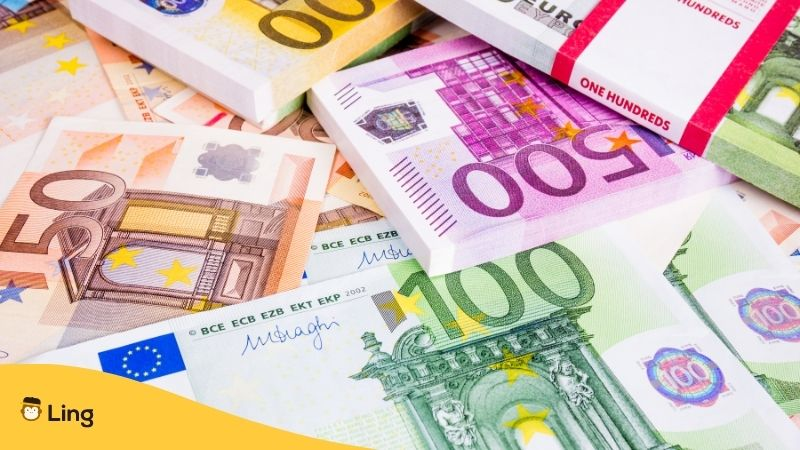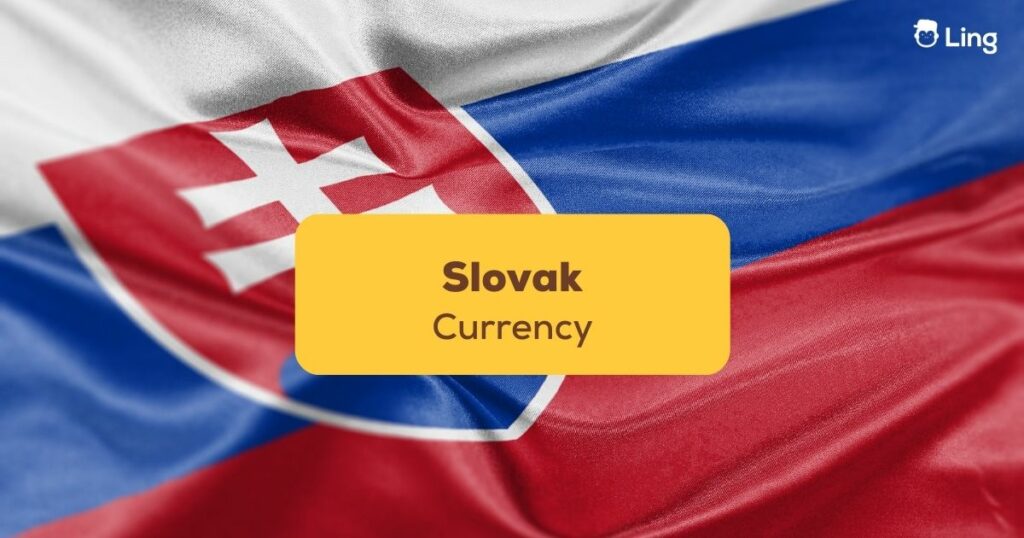Wondering about the Slovak currency? We can’t blame you! Money is an unavoidable necessity when traveling around Slovakia. In this post, we will have a brief look at the history of Slovak currency to boost your local knowledge and impress your new Slovakian friends. We’ll also review some of the terminologies associated with this topic to help you express yourself better when speaking with the locals. Ready for that? Let’s start!
Learning the currency and monetary system of a country can be an important aspect of learning the language, as it allows you to understand prices and financial transactions in context. In the case of Slovakia, the currency before was the Slovak Koruny or SKK. Knowing the currency both used in the past and today can help you understand numbers and prices in Slovak and can also be helpful in practical situations such as shopping or paying bills. Let’s get to know more about this in the sections below!
The Slovak Koruna
Between February 8, 1993, and December 31, 2008, the Slovak currency was the Slovak koruna (SKK). the koruna was subdivided into 100 hellers. The koruna can also be represented by the symbol Sk, and it is also referred to as the “Crown.” It was unique because it was only used within the country and was not a part of the European Monetary Union. The country adopted the Euro as its official currency in 2009, so the SKK is no longer in use.
Brief History Of The Slovak Koruna
The koruna was first introduced to the Austro-Hungarian Empire in 1892 when it was a gold-backed currency. Its purpose was to aid the Empire’s integration into trade with the rest of industrialized Europe. From 1918 and 1939, the Czechoslovak koruna (Kč) became the country’s official currency.
The advent of the war saw it change to the Slovak koruna (Ks). Following the end of WWII, the Czechoslovak koruna (Kčs) was revived and remained the official currency until 1993. After this, the Slovak koruna (Sk) was introduced at parity with the Czechoslovak koruna and remained until it was replaced by the euro on 1 January 2009.
Slovak Koruna Banknotes
On 29 August 1993, the 50 Sk banknote was introduced. This first note was followed by four more denominations, the 20 Sk, 100 Sk, 500 Sk, and 1,000 Sk. The set was completed in 1995 with the introduction of the 200 Sk and 5,000 Sk bank notes. In the same year, the National Bank of Slovakia issued reprints of the 20 Sk, 50 Sk, and 1,000 Sk notes. In 1996 the bank reissued the 100 Sk and 500 Sk banknotes. Some changes were made to the original designs of Slovak currency, and new inks were used, so the notes were easier to distinguish when being used.
Designs
The Slovakian coat of arms was printed along with the note’s denomination. The obverses of the banknotes depict well-known characters from Slovakia’s various historical eras, and on the reverse, depictions of the places where these famous people came from or were associated with. The artist used to create all of the designs was Jozef Bubák.

Slovak Koruna Coins
There were seven Slovak koruna coins originally introduced into circulation. The koruna is divided into 100 hellers or halliers with the abbreviation hal, and the first coin to be issued was the 10 Sk coin on February 8, 1993. This was followed by the 5 Sk, 2 Sk, 1 Sk, 50 hal, 20 hal, and 10 hal coins.
Designs
An alloy of aluminum and magnesium was used to create coins of lower nominal values. Copper, bronze, and nickel were electroplated onto a steel core for coins of a higher nominal value. The 10 Sk coins are created from a bronze and aluminum alloy.
The obverse of every coin retained the same design, which features the Slovak Republic coat of arms along with the year of issue. Flip the coin over, and you will find depictions of historical motifs along with the coin’s nominal value. All of the coins to come out of the Kremnica Mint were designed by Drahomir Zobek.

Adoption Of The Euro
The Slovak koruna joined the Exchange Rate Mechanism on 28 November 2005. Permission was given by the European Council and the European Union for Slovakia to adopt the euro on 8 July 2008. On 1 January 2009, the euro became legal tender in Slovakia. Between 1 January and 16 January 2009, both the euro and the Slovak koruna could be used to make cash payments. The National Bank of Slovakia said it would exchange Slovak koruna coins until 2 January 2014. The bank also announced it would exchange Slovak koruna notes for an unlimited time period.
Tips When Exchanging Currency In Slovakia
As you will be using the euro to pay for goods and services while in Slovakia, it is important to take a few precautions when changing money or using your cards. Only ever exchange money for euro banknotes in a bank or in an accredited exchange office. These are usually available in department stores and major hotels. Be careful when using travelers’ cheques, as they may not be accepted in smaller stores, hotels, and restaurants. It is also a good idea to do some research into exchange rates and to see if the currency you are planning to travel with can be exchanged for euros when you are in Slovakia.
Got cards with you? Most major banks and credit cards can be used in ATM machines throughout the country. Credit and debit cards are also welcomed in many of the shops in major tourist areas, although some establishments may be reluctant to accept less well-known cards issued by foreign banks. It is always a good idea to check that your card will be accepted before ordering food and drinks or making other purchases, as a cash payment may be necessary.
Additional tip: Always carefully check your bank statements when you return home.
Words Related To Currency In Slovak
| English | Slovak | Sound |
| Bill | Vyúčtovanie | |
| Cash | Hotovosť | |
| Cheque | Kontrola | |
| Coin | Minca | |
| Currency | Mena | |
| Exchange | Výmena | |
| Finance | Financovať | |
| Fund | Fond | |
| Money | Peniaze | |
| Pay | Platiť | |
| Payment | Platba | |
| Store | Obchod |
Learn Essential Money Lingo With The Ling App
Learning a few essential money words and phrases for Slovak currency before you visit the Slovak Republic will make your time there far easier. In addition, you can
Ling is a language-learning app that makes learning any new language an enjoyable experience because it uses games and quizzes alongside more traditional teaching techniques.
Download Ling to your mobile now from the App Store or Google Play, and start your Slovakian adventure today.































